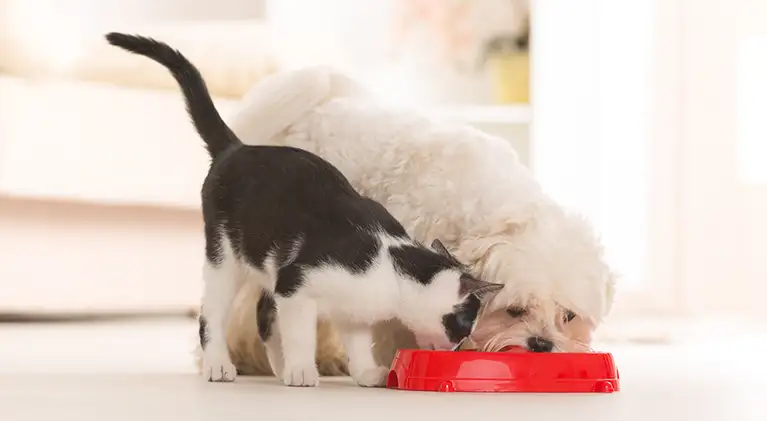If you’ve been down the pet food aisle at your local grocery store lately, you’ve probably noticed the growth in the super premium pet food category. Just like we’re paying closer attention to what we put on our own kitchen tables, we’re becoming just as picky about what goes in the dog dish or cat bowl, which explains why the raw and fresh pet food market has tripled over the last few years. And high pressure processing (HPP) is helping make sure those tasty pet treats are safe, for both you and your feline or canine companion.
Moderate levels of pathogenic bacteria are naturally found in raw or minimally processed meat used to make pet food, and while the pathogens may not harm the iron-clad stomachs of healthy four-legged friends, they can pose a risk to elderly or ill pets as well as the pet owners handling the food. A report from the Journal of the American Veterinary Medical Association showed almost half of the pig ears sold as dog treats in the US were contaminated with salmonella. Another study found that 45 percent of the raw meat fed to racing Greyhounds tested positive for Salmonella. And that’s where HPP comes in.
Pet food companies like Stella & Chewy’s, Nature’s Variety, Primal Pet Foods, and MiracleCorp are using HPP as a way to deal with potential contamination. By inactivating pathogens in the pet food, HPP negates concerns of food-borne illnesses and cross-contamination as well as extends the shelf life of the fresh pet food. Plus the flavor, texture, and nutrients in the pet food are preserved. The pet food remains “raw” since it hasn’t been exposed to heat, but is now much safer for both owners and pets.
So Rover and Mr. Mittens get delicious and nutritious food. And their owners get peace of mind.

